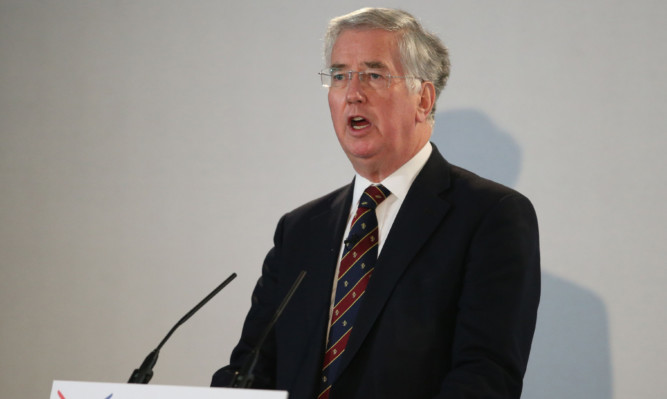Cutting edge technology companies in Dundee are in line to benefit from enhanced defence spending, Michael Fallon has pledged.
The Defence Secretary said he wants a quarter of his increased budget to be spent on small companies as he dangled the carrot of further work for Fife in the Trident replacement programme.
In an interview with The Courier, the Cabinet Secretary defended the renewal of Trident and claimed it would both protect the country’s security and boost its economy.
He said: “I want to see 25% of the defence budget spent on small companies. I visited one the morning, Seebyte, which makes the software for underwater drones.
“We are spending £2m a year with that company and I want to harness Scottish brainpower to the defence effort.
“The big companies … have taken the lion’s share of the defence spending in the past.
“I want more of it spread among the high tech companies. You see those around Dundee and around the edge of Edinburgh, many of them spin-offs from the universities.
“If we are to keep up with our adversaries, it is Scottish brainpower and high value technology that we need.”
A £30 million investment in Rosyth dockyard secured around 100 jobs linked to Trident after Mr Fallon announced an investment package worth £642m for the nuclear deterrent.
He said the 15 to 20-year programme would bring more work north of the border as he conceded the “peak of employment” on the Fife-built aircraft carriers has now past.
“We have started to order the longleat items such as the missile tubes that are being built at Babcock at the moment on the Forth,” said Mr Fallon.
“The propeller shafts, the gearboxes, the specialist forgings, all that work is being commissioned and I want to see Scotland get more of it. Babcock is a very good example. They got five of the first 17 which by the way are called the common missile compartment because they are also for the American submarines.
“I want to see more Scottish companies winning the work, but it’s a long term programme replacing the boats.”
The SNP has slammed work starting on the four replacement nuclear submarines on the Clyde before MPs formally approve renewal but Mr Fallon pointed out the House of Commons has authorised the expenditure.
Meanwhile, he also admitted being surprised David Cameron and George Osborne agreed to a 2% defence spend, having thought “it would be one of the great battles of the autumn”.
But he was criticised by former Dunfermline MP, Thomas Docherty.
He said: “People in Fife have not forgotten that it was the Tories who betrayed the Rosyth workers by moving the Trident refuelling to Devonport and privatising the dockyard.
“I won’t take a lecture on defence from the Tory party who have sacked thousands of combat veterans during a war and left us with aircraft carriers that have no aircraft for a decade.”
